Requiring just a fraction of the time, effort, and cost of traditional roofing systems, liquid-applied roof membranes offer similar performance and longevity.
Over the past decade or two, liquid spray-applied roofing membranes have been one of the fastest growing roofing systems in North America and Europe. This type of system can extend the life of a roof by decades, and requires just a fraction of the time, effort, and cost compared to tear-out and replacement.
Imagine installing a tough, rubber-like roof membrane in just hours, with no smelly hot tar kettles and no messy tear-out, with a material that is self-flashing and seamless. Liquid roofing can be applied over most substrates including metal, concrete, and even existing roofing materials including bitumen and asphalt on flat, low-slope and domed roofs.
According to the Roof Coating Manufacturer Association (RCMA),
“Liquid roofing involves the application of a monolithic, fully bonded, liquid-based coating to a roof. The coating cures to form a rubber-like elastomeric waterproof membrane, capable of stretching and returning to its original shape without damage. Such coating systems are usually reinforced with secondary materials such as glass-reinforced plastic to provide additional tensile strength.”
Note that these materials are different than deck coatings, which are formulated to withstand pedestrian—and sometimes automobile—traffic. Walkways, decks, parking garages, and so forth need deck coatings designed to stand up to the abrasion they encounter.
For most roofs, however, liquid applied coatings are a great solution. They were used, for instance, to restore the roof of the Superdome in New Orleans after Hurricane Katrina. (See story and photos on p. 20).
Types
Dozens of liquid-applied monolithic roof systems are marketed by various manufacturers, each with their own formulation. Application via sprayer is most common, as it speeds application, but many formulations can be applied by brush or roller or even squeegee.
Lee Martucci, senior product manager, coatings and liquid membranes at GAF, confirms, “Most roof coatings can be spray applied, [but] the key is to check the manufacturer’s instructions and to make sure you have the right spray equipment. A sprayer designed for house paint will not have enough power (psi) to spray a roof coating.”
These systems are available in a wide variety of colors. Reflective white coatings are popular as “cool roofs.” By reflecting solar radiation, they lower air conditioning costs and reduce the heat island effect.
Liquid roof coatings, when cured, vary in thickness from about three mils—the same as a single coat of paint—to more than 40 mils.
Most are made with high-tech elastomeric resins, such as urethane, polyvinyl acetate (PVA), and even neoprene. Some are two-part systems while others are single component. Most are solvent based, but water-borne coatings are available. Some can be applied directly from the container. Currently, single component moisture-cured polyurethane coatings are the most popular liquid-applied roof coating technology.
Reinforced systems such as Ames Research Laboratories’ offer increased durability and ruggedness by incorporating high strength contouring roof fabric made of polyester which is embedded between wet coats of Super-Elasto-Barrier rubber base coat. This reinforcement substantially increases the non-permeability, durability and longevity of this system.
Martucci says GAF’s product line includes water-based acrylics, silicone, urethane, and solvent-based coatings. “We also offer ‘butter-grade’ flashings that can be spray-applied,” he says.
Benefits
Martucci continues, “There are many benefits to coating a roof. First, it can extend the life of your roof by protecting the roof membrane below from excessive thermal expansion and contraction. Second, a reflective roof coating can save energy by reflecting the sun’s rays away from the roof, keeping the building cooler during hot days. Third, it’s less disruptive and more sustainable since there is no roof tear-off. No more sending old roofing materials to the landfill.”
Performance: The RCMA website states, “The primary advantages of elastomeric roof coatings are their low temperature flexibility, chemical resistance and elasticity. It can deliver up to 25 years performance depending on the coating system employed.”
As noted above, they are self-flashing and seamless, sealing the two most common areas where leaks develop. They’re versatile, being compatible with most substrates.
Their performance and long life has been verified on some of the most demanding projects in the world, and major manufacturers offer guarantees of performance that compare favorably with any other roofing system.
Cost and Speed: The RCMA says, “The process of liquid roofing provides a cost-effective method of making a new or existing roof waterproof. It is estimated that liquid roofing is 70% less expensive than overall roof replacement in refurbishment situations.” In addition to labor savings for the crew, this type of roofing minimizes disruption to the occupants or businesses. A few roof coating systems such as that made by Ames Research Labs requires no special equipment or training, so most maintenance professionals and their crews can easily perform the work.
Safety: Liquid roofing does not involve hot tar kettles, torches, or other high-temperature tools, eliminating a fire risk to contractors, the building, and its occupants. Liquid roofing systems encapsulate the surface they are applied to, which can be a major advantage if the original roofing system contains asbestos.
Sustainability: Roof coating systems can significantly reduce the amount of material sent to landfills, and white roof coatings can often reduce energy costs. For instance, Ames’ Super Elasto barrier system reflects the sun’s rays instead of absorbing that solar energy while still creating a continuous non-permeable reinforced rubber membrane.
Selecting a Product
Martucci, at GAF says, “There are many characteristics of a coating to consider. The longer lasting coatings have extensive weathering testing and typically outperform others in adhesion, elongation, tensile, and water absorption. It’s better to compare these properties than to rely on how many years the coating is rated for on the label or the length of the product’s warranty.”
But one can’t simply look at two different pails of material and predict which one is going to perform better than the other. Fortunately, organizations such as the American Society for Testing and Materials (ASTM) have developed guidelines. For liquid-applied roof coatings, ASTM standard D-6083 provides a reliable measure of viscosity, elongation, tensile strength, durability, permeance, adhesion, tear strength, and low-temperature flexibility.
Limitations and Risks
Obviously, liquid spray-applied roofing membranes are not appropriate for every situation. If the roof has reached a point that patching or re-coating is not a viable option, liquid membranes most likely won’t solve the problem, either. Martucci says, “As a rule we recommend roof replacement if 20% or more of the roof needs repair. Limitations depend on the type of coating being applied. All coatings should have a clean, dry substrate.”
Temperature is also an issue. Martucci says water-based acrylics should be applied when the weather is 50°F or warmer, although silicones and solvent coatings can be applied in cooler temperatures.
Some flat roofs have low spots where puddles collect after rain, especially around drains. Some manufacturers will warranty their coatings for ponding water, but many will not, and the coating may fail if exposed to standing water. Typically, manufacturers for acrylic roof coatings do not include warranties for ponding water, while some polyurethane roof coatings manufacturers will.
As with all roof systems, workmanship is key.
For contractors considering adding this type of roof system to their company services, Martucci says, “Getting started in coatings is fairly easy. Many coating manufacturers offer training classes and some will provide on-the-job training. You do not need to invest in expensive spray equipment in the beginning. Start out slow and roll your first job. You will quickly learn it’s a great way to build your business and justify the spray equipment after just a few jobs.”
Fall 2015 Back Issue
$4.95
Relieving Hydrostatic Pressure
Waterproofing World-Class Stadiums
Fluid Applied Roof Coatings
AVAILABLE AS DIGITAL DOWNLOAD ONLY
Description
Description
Relieving Hydrostatic Pressure
It’s critical for water to drain away from footings. Sump pumps, sheet drains, perforated pipe, and other products must work together for maximum performance.
Waterproofing World-Class Stadiums
From the recently renovated Superdome to new facilities built for the Olympics and the World Cup, these massive projects require extensive waterproofing from the foundation to the roof.
Fluid Applied Roof Coatings
Spray-on roofing membranes can extend the life of a roof by decades without the cost of tear-out and replacement. It takes less time, less labor, and yields a monolithic, seamless, waterproof roof.
Additional Info
Additional information
| Magazine Format | Digital Download Magazine, Print Mailed Magazine |
|---|

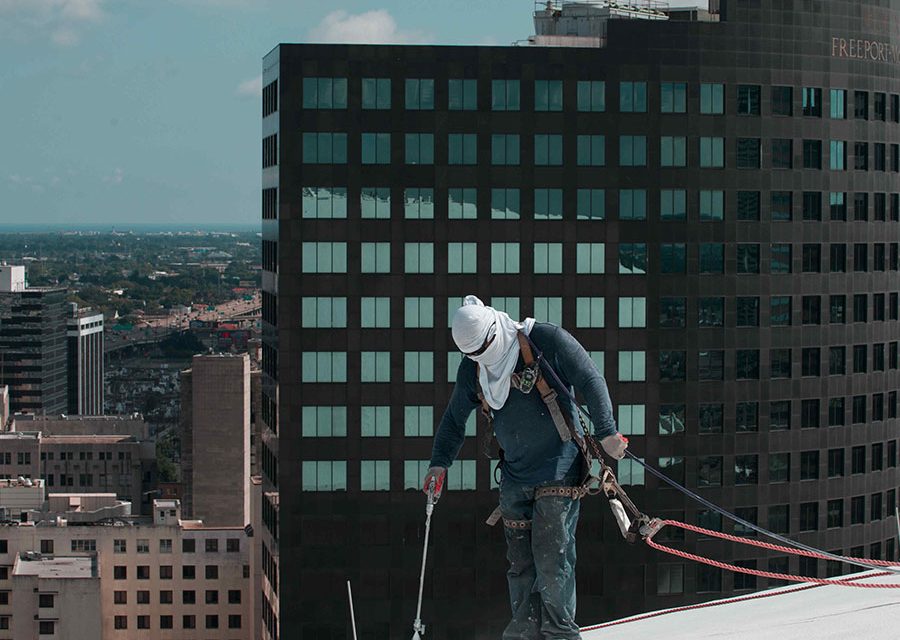
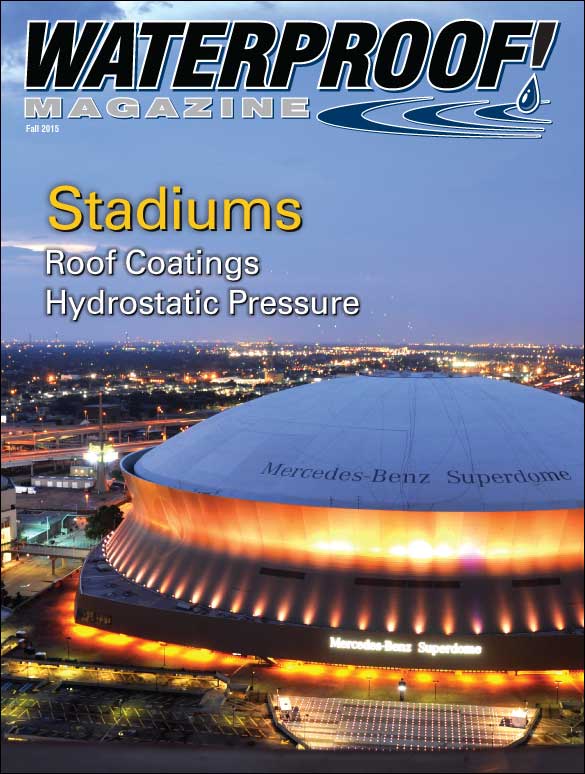


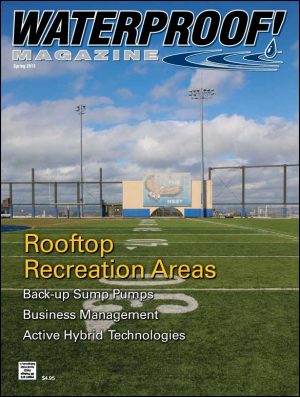

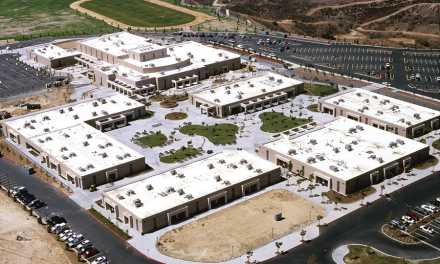
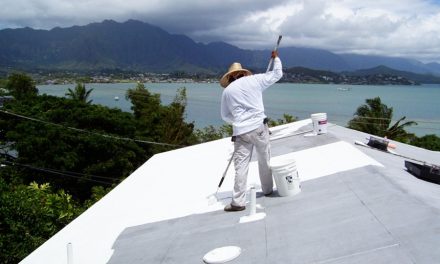
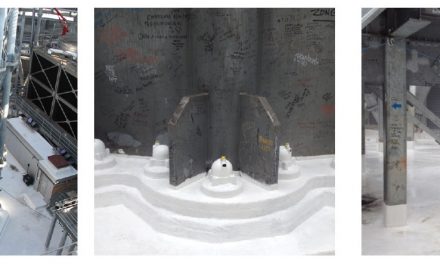
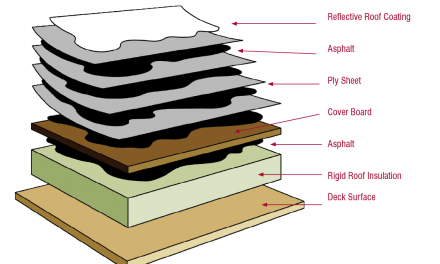










I am researching materials for about 1000 sq. feet of roofing over my home. I will likely rebuild my roof deck to provide more adequate slope but once that is complete I’m considering various waterproof roofing materials such as Ames, Surecoat, Conservation Technology, etc. Does the Ames Fabric system have a good reputation for durability? The idea of a fabric coated application is appealing and I wasn’t keen to get into fiberglass because of the inherent dangers. What are your thoughts or advice?